So let's talk about Tesso (鉄鼠), the Iron Rat!
Before he was a rat of iron, he was known (and is generally more known by in Japan today) as Raigo (頼豪), a humble Buddhist monk.
As I've explained before, in Japan, when you defy the sacraments of something, or make deals with demons, you get horror movies starring you as the bumbling idiot encouraging all the hubris you can hope to accumulate and send you to your ghastly demise. But if you're a very good person, innocent and pious, and are unfortunately killed in the prime of your life by one of those aforementioned hubric bumbling idiots, then your soul is unable to rest, and you come back even more terrifying and vengeful than ever before, and are termed an onryō (怨霊).
Usually, we associate onryō with poor, helpless and mistreated women, in the manner of Okiku from popular legend or Sadako from Ring. But while onryō are usually thought to be women nowadays, the name originally applied to people who had been wronged by the government and came back to wreak their spiritual vengeance upon the Emperor. Onryō can be male or female, but back in the day, the vast majority were men.
Raigo is just such a man, a perfect example of the classic definition of onryō.
Raigo was a monk at the Buddhist temple Mii-dera, during the Heian Period. At this time, the Emperor was Shirakawa-tennō, who was in great need of an heir to the Imperial Throne. He approached Raigo, begging the monk to pray for a son for him, and promised Raigo anything he would like in return. Raigo agreed to the request, wishing only that his temple could be expanded so that he could further the teachings there. Shirakawa-tennō eagerly consented, and Raigo began the prayers for the Emperor to have a son.
Shortly thereafter, a son was born to the Emperor and his Imperial Consort. Shirakawa-tennō was overjoyed, and set about making plans to grant Raigo his wish.
Unfortunately, Raigo's temple had a rivalry with the Enryaku-ji temple of Kyoto, which was located on the mountain Hieizan. Perhaps you'll recall the souhei (warrior monks) of Hieizan from my entry on Nobunaga. Nobunaga went to war with the monks because he realised that the (often blackmailing, bribery, and even religious threatening) influence they had over the Imperial family and all of Kyoto from their spot on Hieizan made it impossible for any actual peace in the land, so long as they were calling the shots for their own interests. But this had been going on for a very long time, and all the way back in the Heian Period, it was no different.
The monks of Enryaku-ji controlled through terror and power, and that Mii-dera had a rivalry with them is no understatement. The souhei destroyed dozens of places favoured by Mii-dera's followers, and burned Mii-dera itself to the ground four times in the 11th century alone. So when they got word that the Emperor was going to grant Mii-dera an expansion to obtain further studies and teachings for their acolytes, the souhei simply were not having it. The exercised their control by blackmailing and threatening the Emperor with curses and violence, should he grant Raigo his humble request. The Emperor was backed into a corner and really had no choice in the matter, and was forced to concede.
Denied his favour from the Emperor, Raigo went on a hunger strike. He did not eat for 100 days, and became gaunt and ghoulish in appearance, and was frightening to behold. He went mad with hunger and was said to mutter to himself incessantly, even going so far as to pray for curses toward Enryaku-ji. He died from starvation in 1084.
Of course, that's not the end of our story. It's only the beginning.
Shortly thereafter, Shirakawa-tennō was disturbed to hear reports that his young son, the Prince Atsufumi, was being visited by a mysterious monk. He desperately prayed for the safety of his son. But still, night after night, there were sightings of an unfamiliar, ghostly monk, with wispy white hair and a gaunt, sunken face, appearing over the Prince's bed! Unfortunately, the Emperor's prayers were for naught, and Prince Atsufumi died at the age of four. (Of course, the dates don't quite match up, but that's trivial, really. Perhaps it was all a big conspiracy to take away from the influence of Raigo and the problems faced by Shirakawa-tennō. Actually, it was not the first or the last time his actions resulted in an onryō attack on him and his family.)
But what does any of this have to do with metal? Well, I'm getting there, be patient.
Shirakawa-tennō was a victim of circumstances. The real culprits responsible for Raigo's death and subsequent grudge were the warrior-monks of Enryaku-ji. Raigo's earthbound spirit took on the form of an enormous rat, as large as a bull, a body as strong as a boulder, and indestructible teeth of iron. He also had the innate ability to summon rats to him, and rats in countless numbers, thousands and thousands, who all converged on Enryaku-ji temple.
After all of that starvation, Raigo was hungry.
So the yōkai Tesso, formerly Raigo, and all of his rat minions ate up every bit of information in that rival temple. Sacred texts, historical scrolls, and priceless works of art were destroyed. Any books of knowledge or holiness were lost to the stomach of an enormous rat with unyielding teeth of iron.
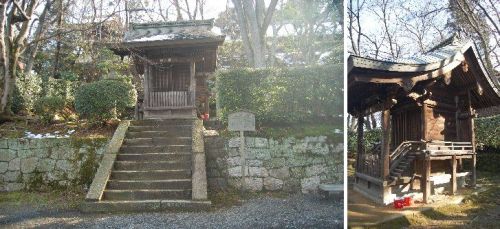
Mii-dera is located in Ōtsu, and is still active today. Raigo has his own shrine on the grounds, which faces Enryaku-ji.
The body of Raigo is said to have been buried somewhere in Oyama, but its exact location is unknown. However, if you do find it, legend has it that if you offer a stone on the mound, you will be protected against the wrath of Tesso. Rats getting into homes and temples and eating everything to the point of destruction was a very serious problem, so any help you could get from the controller of the rats certainly couldn't hurt.

Tesso's statue on Mizuki Road.

Sekien's Tesso.
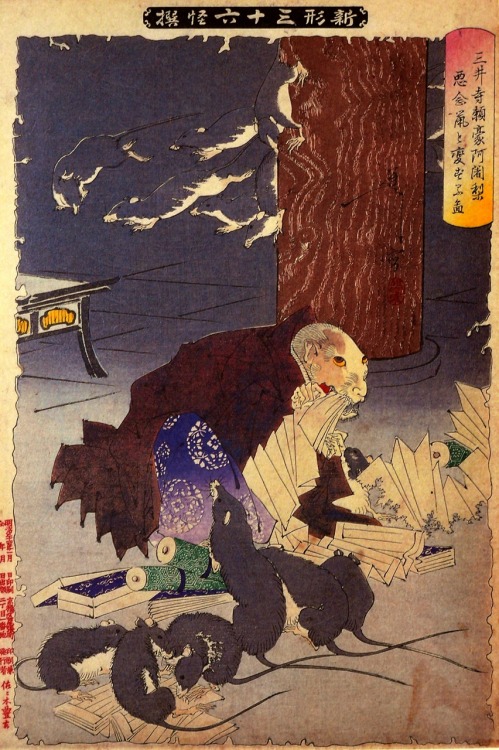
Yoshitoshi's Tesso. I personally prefer Yoshitoshi's to Sekien's, because I think Tesso looks more monstrous, and it kind of freaks me out.
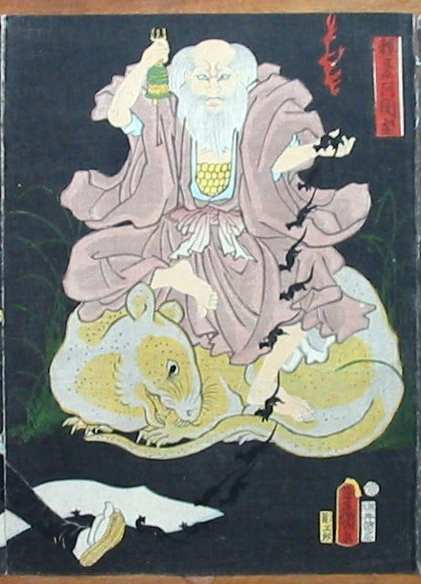
A portion of a triptych depicting Raigo, pre-yōkai-form.
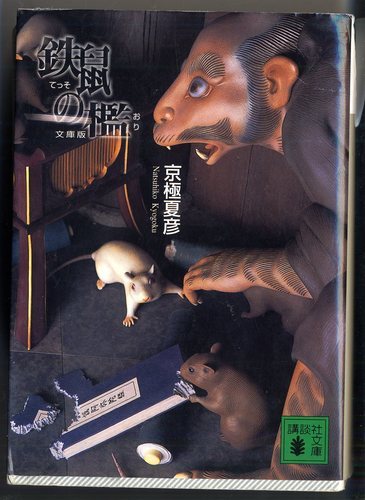
The cover of Kyōgoku Natsuhiko's mystery novel Tesso no Ori (鉄鼠の檻). Kyōgoku is probably my favourite author. He is a member of the yōkai conference I mentioned earlier, and writes mystery/detective novels usually featuring yōkai, however, the yōkai are most often a stand-in or theme upon which the mystery is related and tied together. His writing is fantastic, though he is a bit notorious for being really, really philosophical and wordy, as his books are generally four times the size of regular Japanese novels.
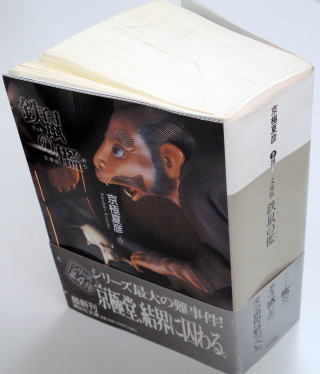
Don't you just hate it when people incessantly drone on and on about yōkai?
Anyway, this one obviously draws from Tesso, and many covers of his books feature papier-mâché sculptures by Arai Ryo.
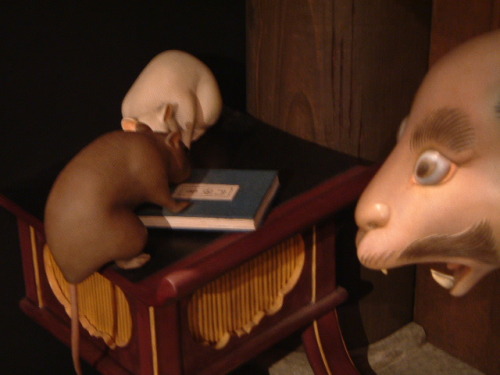
This Tesso looks more like Sekien's Tesso, and his expression is hilarious.
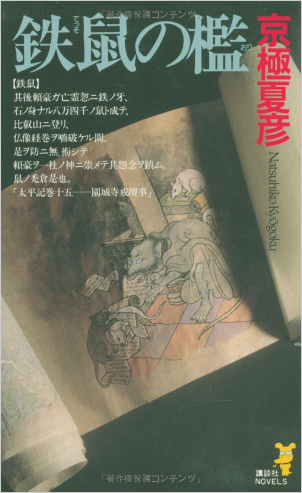
An alternate cover of Tesso no Ori.
So that's Tesso. Maybe he wasn't too scary to you? But as someone with his own personal library of pretentious, yōkai-based writings and religious texts, I can safely say that this is probably the most terrifying yōkai I've covered to date.
No comments:
Post a Comment